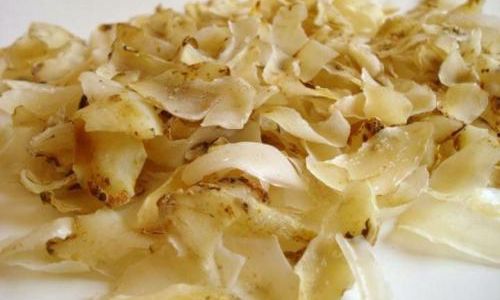Table of content
Steamed oranges with salt, a time-honored remedy rooted in traditional Chinese and Southeast Asian folk medicine, have gained popularity for their soothing effects on coughs, sore throats, and congestion. This simple yet effective preparation combines the natural vitamin C and antioxidants of oranges with the anti-inflammatory properties of salt, creating a warm, comforting beverage that doubles as a natural decongestant. While the dish’s origins trace back to generations of home cooks seeking affordable, accessible solutions for seasonal ailments, its modern resurgence highlights a growing interest in holistic wellness practices. Below is a comprehensive guide to crafting this age-old remedy, along with insights into its benefits, variations, and cultural significance.
The Science Behind the Remedy
Oranges, particularly varieties like navel oranges or mandarins, are rich in vitamin C, a nutrient essential for immune function and tissue repair. When steamed, the heat gently breaks down the fruit’s fibrous membranes, releasing its juices and softening the pulp. This process not only enhances the fruit’s natural sweetness but also makes its nutrients more bioavailable. Salt, a mineral with antimicrobial and anti-inflammatory properties, acts as a catalyst in this remedy. It helps thin mucus, reduce throat irritation, and balance the orange’s tartness, creating a harmonious blend of flavors and therapeutic effects.
Ingredients and Tools
To prepare steamed oranges with salt, you will need:

- 2 medium-sized oranges (preferably organic, to avoid pesticide residue)
- 1–2 teaspoons of sea salt or Himalayan pink salt (avoid iodized table salt, as it may alter the taste)
- A sharp knife
- A cutting board
- A steamer basket or a heatproof bowl
- A pot with a lid (if using a steamer basket)
- A spoon
- Optional additions: honey, ginger slices, or a cinnamon stick for enhanced flavor and benefits
Step-by-Step Preparation
Selecting and Washing the Oranges
Choose firm, unblemished oranges with vibrant, orange skin. Organic varieties are ideal, as they minimize exposure to synthetic waxes or chemicals. Rinse the oranges under cool water, gently scrubbing the skin with a vegetable brush to remove dirt or residues. Pat them dry with a clean towel.
Preparing the Orange
Using a sharp knife, slice off the top quarter of each orange, creating a “lid.” This exposed surface will allow steam to penetrate the fruit’s flesh. Some recipes recommend slicing the orange horizontally, while others prefer a vertical cut—either method works, as long as the interior is accessible.
Adding Salt
Hold the orange steady on the cutting board. Using a small spoon, gently prick the pulp with a fork or the tip of the knife to create tiny holes. This step helps the salt infuse into the fruit. Sprinkle ½ to 1 teaspoon of salt into the center of each orange, distributing it evenly over the exposed flesh. Avoid over-salting, as this may overshadow the orange’s natural sweetness.

Steaming the Orange
Method 1: Using a Steamer Basket
- Fill a pot with 2–3 inches of water and bring it to a simmer.
- Place the oranges in the steamer basket, ensuring they do not touch the water.
- Cover the pot and steam for 15–20 minutes, or until the orange’s skin softens and the flesh becomes tender.
Method 2: Using a Heatproof Bowl
- Place the oranges in a heatproof bowl and add 1–2 inches of water to the bowl.
- Cover the bowl tightly with aluminum foil or a plate.
- Place the bowl in a steamer or a pot with a trivet, and steam for 20–25 minutes.
Serving the Remedy
Once steamed, carefully remove the oranges from the heat. Allow them to cool slightly before handling. Using a spoon, scoop out the warm pulp and juice from each orange, discarding any seeds or tough membranes. The liquid can be consumed directly, or you may choose to blend the pulp with a bit of hot water for a smoother texture.

Enhancing the Recipe
While the classic recipe is beloved for its simplicity, many modern adaptations incorporate complementary ingredients to boost flavor and health benefits:
- Honey: Add 1 teaspoon of raw honey to the steamed pulp for an extra immune boost and soothing sweetness.
- Ginger: Slice a small piece of fresh ginger and place it inside the orange before steaming to enhance its anti-inflammatory properties.
- Cinnamon: Sprinkle a pinch of cinnamon over the steamed pulp for a warming, aromatic twist.
- Lemon: For a tangier flavor, squeeze a few drops of fresh lemon juice into the mixture.
Benefits and Precautions
Steamed oranges with salt are prized for their ability to:
- Relieve coughs and sore throats: The warmth and moisture from the steam soothe irritated airways, while salt helps reduce inflammation.
- Ease congestion: The combination of vitamin C and steam acts as a natural decongestant, loosening mucus.
- Boost immunity: Oranges’ high vitamin C content supports the body’s defense against infections.
However, it is essential to exercise caution:

- Avoid excessive salt: Too much salt can dehydrate the body and irritate the throat further. Stick to the recommended 1–2 teaspoons per serving.
- Check for allergies: Individuals with citrus allergies or hypertension should consult a healthcare provider before trying this remedy.
- Discard spoiled oranges: Overripe or moldy oranges can cause adverse reactions. Always use fresh, high-quality fruit.
Cultural Significance
In many Asian cultures, steamed oranges with salt are more than just a home remedy—they are a symbol of care and tradition. Grandmothers and mothers have passed down this recipe for generations, often serving it to loved ones during cold winters or rainy seasons. The dish’s humble ingredients and gentle efficacy reflect a broader philosophy of using nature’s bounty to nurture health.
Variations Across Regions
While the basic recipe remains consistent, regional variations add unique flair:
- In Vietnam, steamed oranges are sometimes combined with pandan leaves for fragrance.
- In Taiwan, a pinch of brown sugar is added to balance the saltiness.
- In Southern China, the dish is often served with a side of warm congee for a comforting meal.
Modern Adaptations
As interest in natural remedies grows, steamed oranges have inspired creative culinary twists. Food bloggers and wellness enthusiasts now experiment with:

- Steamed orange muffins: Incorporating the steamed pulp into batter for moist, citrus-flavored treats.
- Orange-salt syrups: Reducing the steamed liquid into a concentrated syrup for cocktails or mocktails.
- Facial toners: Using cooled orange-infused steam water as a refreshing skincare toner.
Conclusion
Steamed oranges with salt offer a delightful blend of simplicity, nostalgia, and therapeutic potential. Whether you’re seeking relief from a stubborn cough or a cozy winter beverage, this humble remedy delivers comfort in every spoonful. By embracing traditional wisdom and adapting it to modern tastes, we honor the timeless connection between food, health, and culture. So the next time a cold threatens to derail your day, reach for an orange, a dash of salt, and a steamer basket—your body and taste buds will thank you.





0 comments